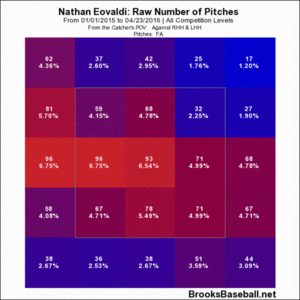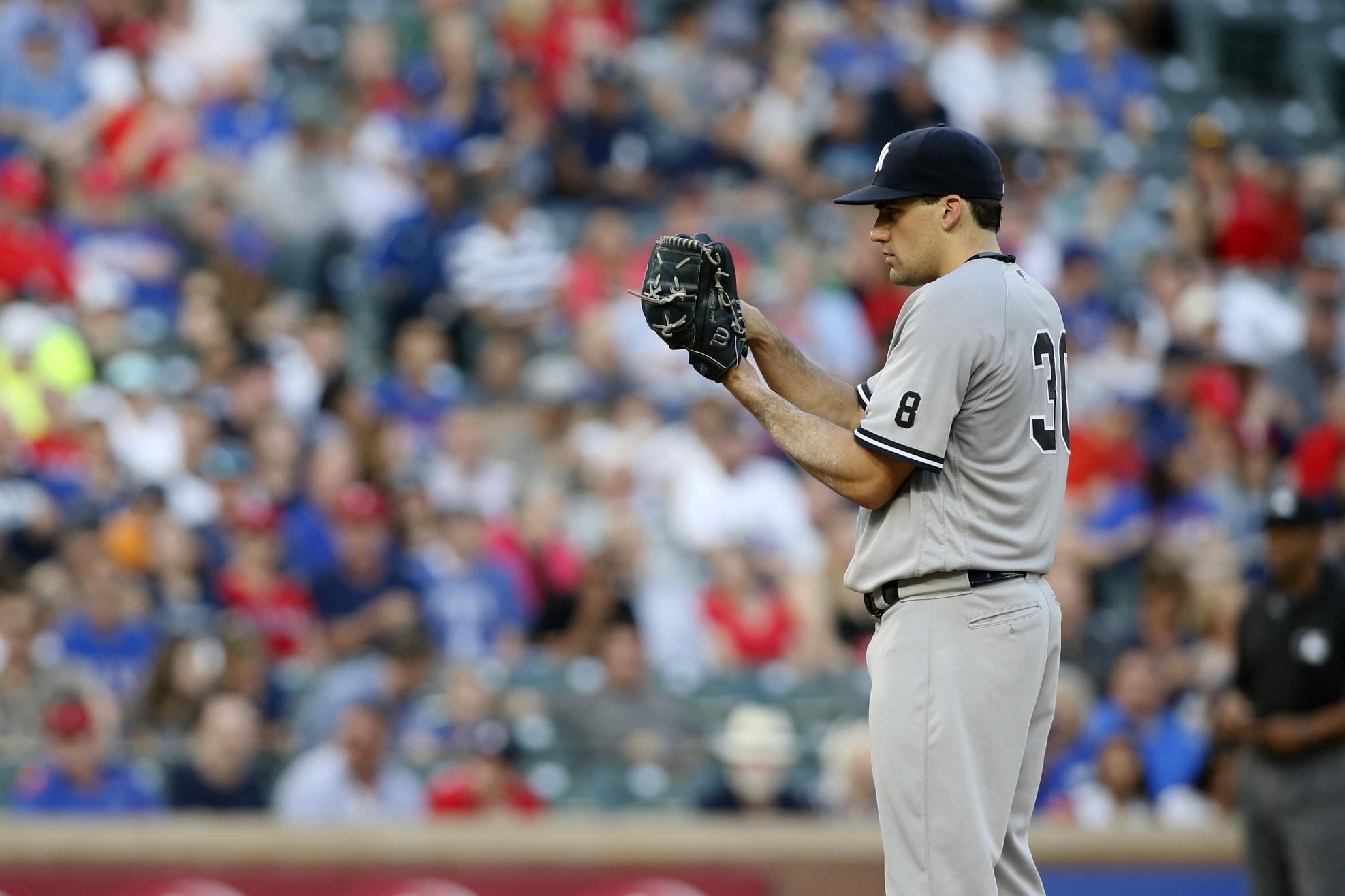Writers have spent countless words trying to crack the code on the mystical Nathan Eovaldi—he of all the talent and none of the results. Nasty Nate’s nickname holds true when looking at the stuff alone, but everything he does has a caveat that has stopped him from becoming one of the better pitchers in the league: his blazing-fast-but-straight fastball, his nasty-but-inconsistent splitter, his burgeoning-but-new slider, and the serviceable-but-meh curveball. He has all the talent in the world, but it hasn’t translated into results. Eovaldi is all-too-prone to hang a pitch or leave it over the plate, letting spurts of dominance be rudely interrupted by the one big inning.
The problem with Eovaldi isn’t his talent, his control, his command, or his approach. Instead, it’s about combining these numerous facets of the game together for a full start, not the full start save for that one pitch. Really, it’s about him ‘putting it all together’—finally throwing a flawless start and riding that momentum into his next game and beyond. Eovaldi is so close to being great, but it still hurts to watch him: the expectation of a disaster looms, even right after he strikes out the side. We’ve seen Eovaldi come close to putting it together, but Monday’s flirt with a no-hitter may have been the first time he really put it together. So the question is, what happened to allow Eovaldi to spin a gem?
The Fastball Didn’t Live in The Strike Zone
There are a lot of reasons that have been suggested for Eovaldi’s inability to dominate with an insanely speedy fastball, including a lack of movement, absence of deception in his delivery, and dearth of other weapons in his arsenal. One that isn’t brought up frequently is Eovaldi throwing too many strikes. There’s a difference between fastball control and fastball command, and Eovaldi may live on the line of having enough control, but not enough command. He can often spot the pitch in the strike zone, but not in specific spots. As a result, he’s no stranger to leaving the heater over the plate, allowing hitters to tee off on the pitch. He didn’t do that on Monday, though, showing an ability to both move the pitch around the strike zone, and to stay on the black (or just off it).

The Slider Was…Different
Eovaldi was knocked last offseason for a lack of depth in his arsenal, allowing hitters to sit on the fastball as they didn’t have to worry about his secondary offerings. Eovaldi responded by developing a splitter that, when on, is more effective than the triple-digit heater. Now he’s added a new slider to the repertoire.
You may be a bit confused right now, because Eovaldi has always had a slider—using it almost a quarter of the time over the past three seasons. But the slider he used in his last start really was new. Eovaldi picked up on that, saying “Recently some games when I threw my slider, I didn’t have good depth to it. Tonight I had good depth to it.”
Eovaldi’s slider has long been boring, with solid horizontal movement but well below average vertical movement (or depth). Eovaldi had 3.2 inches of horizontal movement and -.30 inches of vertical movement on the pitch in 2015—the horizontal movement solid but the vertical awful. This season, he’s come out with a pitch that has 0.5 more inches horizontally and 3.2 inches vertically. The pitch has also gained velocity, shooting up from 85.7 mph to 89.41 mph. Take a look at the stark difference in movement and velocity over the past season, from a standard Eovaldi slider in 2015 to a standard Eovaldi slider in 2016.
Eovaldi’s done another remarkable thing with the slider—he’s managed to harness the pitch despite its new velocity and movement. Eovaldi’s slider ended up as a ball more often than a strike over the past year, but on Monday he threw almost five strikes for every ball on the slider.
More Splitter, and More Splitting
As fellow BP Bronx writer Stacey Gotsulias recently wrote, “[Eovaldi] will need his slider to slide and his somewhat new splitter to split, otherwise, this could be a very long season.” We’ve just covered the now-sliding slider, but it’s time to look at the splitting splitter. This splitter has been nasty at times in 2016, but it has a .535 slugging percentage (and .279 ISO) against this season, both worst among all his pitches.
Eovaldi’s splitter, when it splits, is nearly unhittable. The problem is, he can lose feel for it at times and hang the pitch over the plate. Unsurprisingly, bad things happen when he does that. Eovaldi has given up four home runs this season, all against the splitter.
Even with the threat of the pitch losing its effectiveness at any time, Eovaldi upped the usage from 25.41% in his previous three 2016 starts to 33.67% on Monday. He also saw a 29.3% whiff rate on the pitch over the past year skyrocket to 45%. The pitch wasn’t different overall, but the consistency of it was.
In addition, Eovaldi cut down on the splitter’s use early in the count, saving it for when he had two strikes on the batter. With two strikes, he nearly doubled its usage compared to his last 30 starts. Eovaldi decided to save the pitch for later in the count on Monday, and it helped him to finish off the batter while increasing the effectiveness of the pitch.
———
It’s a lot to ask of Eovaldi to repeat all of this on a regular basis, which is probably why he won’t carry a no hitter into the seventh inning in every start. Still, there’s a lot to learn from his finest start in quite a while, and several things Eovaldi did can apply to future outings. Maybe the slider won’t have as much depth next start, but he should gain a better feel for the pitch as he grows more comfortable with it. Furthermore, Eovaldi can now trust the pitch, and using it more often and more confidently certainly isn’t the worst idea in the world. Eovaldi’s fastball may not maintain such pinpoint command of the fastball, but starting to place it on the outskirts of the strike zone—possibly allowing a couple more walks in exchange for less hard hits—is also a good starting point. Continuing Monday’s usage pattern of the splitter won’t be impossible, though remaining consistent with it will be a challenge. But given the eye-opening development of Eovaldi in his short time with the Yankees, there’s no doubt he can find a way to do just that.
Lead photo: Tim Heitman / USA Today Sports
